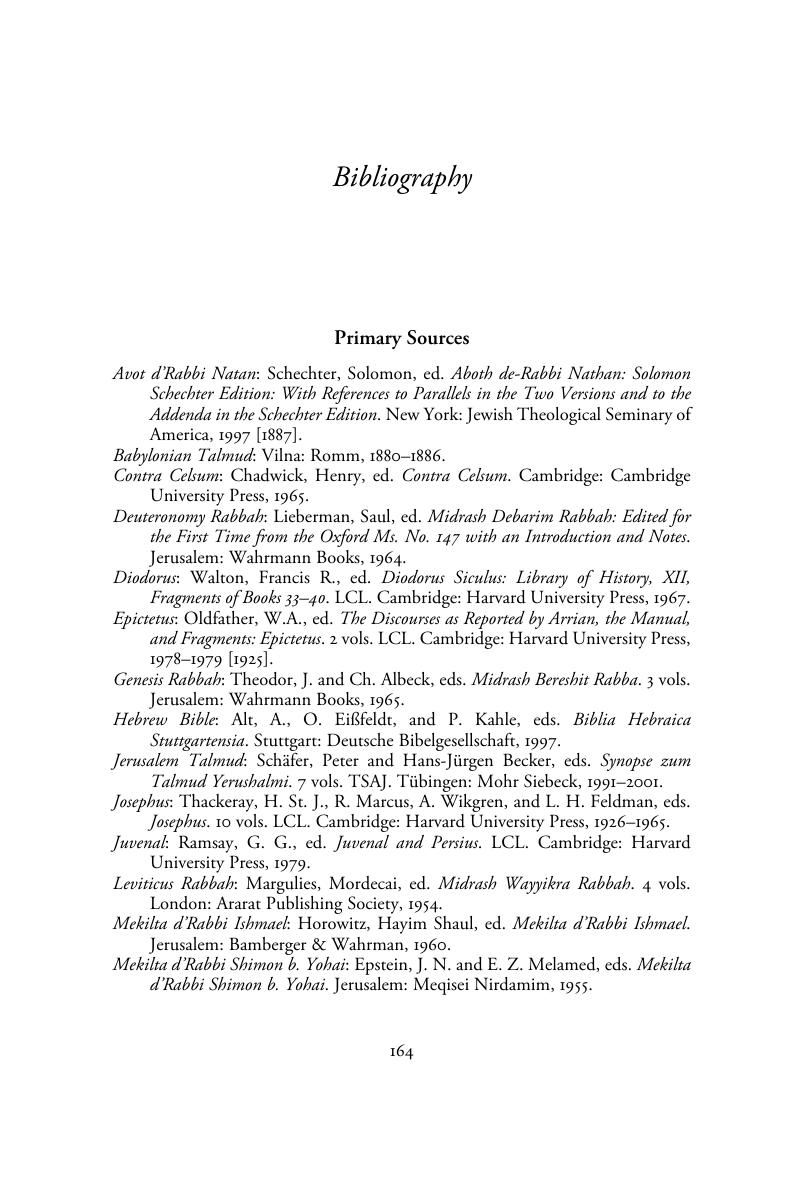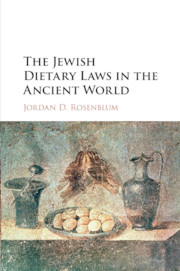Book contents
- The Jewish Dietary Laws in the Ancient World
- The Jewish Dietary Laws in the Ancient World
- Copyright page
- Dedication
- Contents
- Acknowledgments
- Abbreviations
- Introduction: Reasonable Creature
- Chapter 1 Hebrew Bible
- Chapter 2 Greek and Roman Sources
- Chapter 3 The Hellenistic Period: Jewish Sources
- Chapter 4 The Hellenistic Period: The New Testament
- Chapter 5 The Tannaitic Period: Jewish Sources
- Chapter 6 The Rabbinic/Patristic Period: Amoraic Sources
- Chapter 7 The Rabbinic/Patristic Period: Christian Sources
- Conclusion: Food Ethic
- Bibliography
- Index of Pre-Modern Sources
- Selected Index of Modern Scholars
- Selected General Index
- References
Bibliography
Published online by Cambridge University Press: 28 March 2017
- The Jewish Dietary Laws in the Ancient World
- The Jewish Dietary Laws in the Ancient World
- Copyright page
- Dedication
- Contents
- Acknowledgments
- Abbreviations
- Introduction: Reasonable Creature
- Chapter 1 Hebrew Bible
- Chapter 2 Greek and Roman Sources
- Chapter 3 The Hellenistic Period: Jewish Sources
- Chapter 4 The Hellenistic Period: The New Testament
- Chapter 5 The Tannaitic Period: Jewish Sources
- Chapter 6 The Rabbinic/Patristic Period: Amoraic Sources
- Chapter 7 The Rabbinic/Patristic Period: Christian Sources
- Conclusion: Food Ethic
- Bibliography
- Index of Pre-Modern Sources
- Selected Index of Modern Scholars
- Selected General Index
- References
Summary

- Type
- Chapter
- Information
- The Jewish Dietary Laws in the Ancient World , pp. 164 - 178Publisher: Cambridge University PressPrint publication year: 2016



